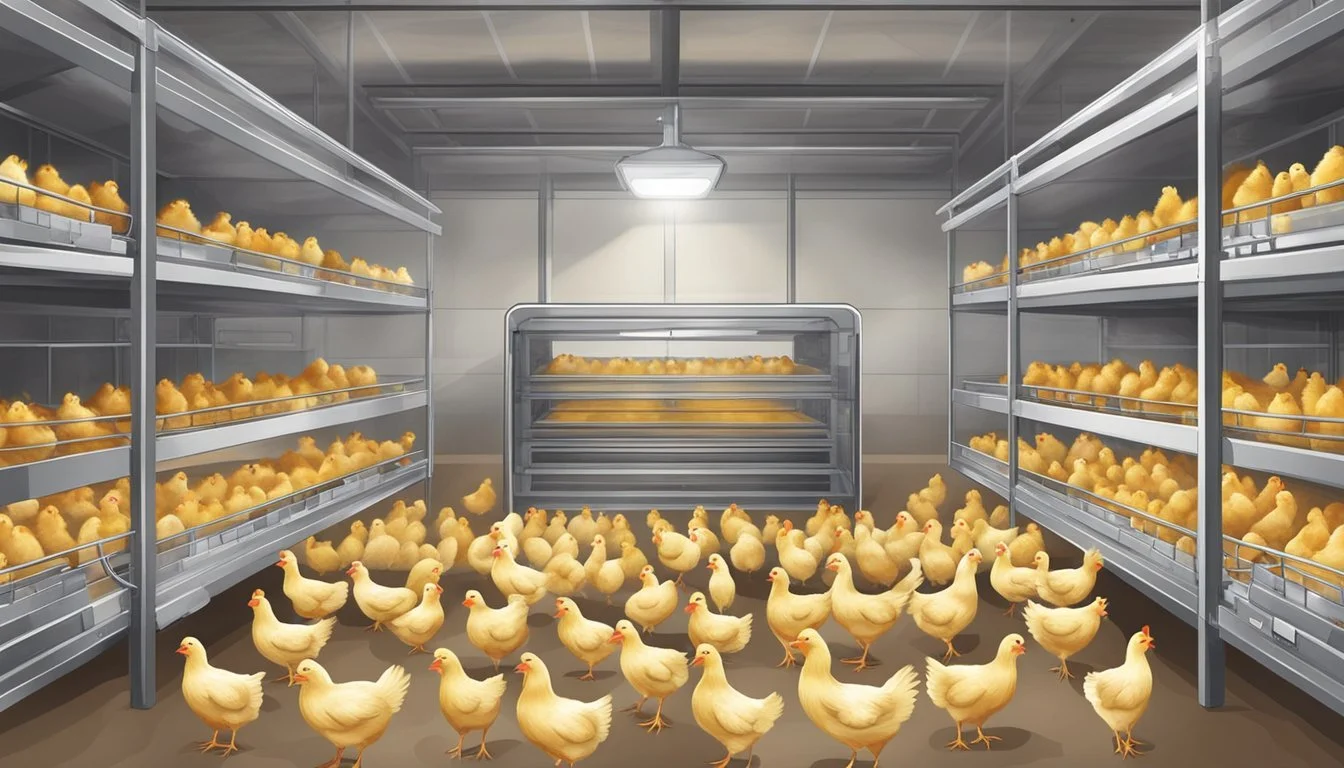Poultry (Gallus gallus domesticus) Farmers Community
Optimizing Brooder House Environmental Controls for Chick Health and Growth
- This topic is empty.
- AuthorPosts
- March 30, 2025 at 8:55 am #613850
 Agric4ProfitsKeymaster
Agric4ProfitsKeymaster
The brooder house is a critical component in the early life stages of chicks, as it directly influences their health and growth.
Optimizing environmental controls within the brooder house ensures that chicks are provided with the ideal conditions for development, minimizing stress and improving overall performance.
Proper management of factors such as temperature, humidity, ventilation, and lighting is essential to create a conducive environment for chicks. In this article, we will explore the importance of environmental control optimization in brooder houses and its impact on chick health and growth.
1. Temperature Management for Chick Comfort
Temperature regulation is one of the most crucial aspects of brooder house management. Chicks require a warm environment to thrive during the first few weeks of life as they are unable to regulate their body temperature effectively.
The ideal temperature for newly hatched chicks is approximately 95°F (35°C), and it should be gradually decreased by 5°F each week until it reaches ambient temperature.
Ensuring consistent temperature control helps prevent heat stress, dehydration, and weak growth, as well as reduces the likelihood of diseases. Using infrared heat lamps, thermostats, or automated temperature control systems can provide the necessary warmth while avoiding overheating, which can cause discomfort and increased mortality rates.
2. Proper Ventilation for Air Quality
Good ventilation is essential for maintaining air quality in the brooder house, which directly impacts chick health. Without proper airflow, excess moisture, carbon dioxide, and ammonia can build up, leading to respiratory problems, poor growth, and an increased risk of infections.
Ventilation systems should be designed to remove excess humidity and gases while ensuring that the chicks are not exposed to cold drafts or extreme air movements. This can be achieved through adjustable windows, fans, or mechanical ventilation systems that allow for a steady flow of fresh air.
Proper ventilation helps in maintaining optimal oxygen levels, reducing the risk of respiratory issues, and ensuring a comfortable environment for chicks to grow.
3. Humidity Control for Optimal Growth
Humidity levels in the brooder house need to be carefully monitored to promote chick health and growth. Too much moisture in the air can lead to respiratory issues, wet bedding, and an increased risk of disease, while insufficient humidity can cause dehydration and hinder proper feather development. Ideal humidity levels should be between 50-60% during the early stages of chick development.
Using humidity regulators or dehumidifiers can help maintain a stable environment. Additionally, proper bedding management and regular cleaning of the brooder house can help control moisture levels and ensure that the chicks remain comfortable and healthy throughout their early life.
4. Lighting for Growth Stimulation
Lighting plays a significant role in chick development, affecting their behavior, feeding, and overall growth. In the brooder house, a controlled lighting schedule should be established to mimic natural day and night cycles, which helps regulate circadian rhythms and encourages chicks to eat and drink more.
During the first week, continuous lighting (24 hours) may be used to ensure that chicks can find food and water at any time, while gradually transitioning to a more natural light cycle (e.g., 16 hours of light and 8 hours of darkness) after the initial period.
Proper lighting also helps stimulate the chicks’ growth rate, and when combined with optimal temperatures and feeding, it can contribute significantly to overall health.
5. Cleanliness and Biosecurity Measures
A clean environment is essential for preventing the spread of diseases and promoting optimal chick growth. Regular cleaning and disinfection of the brooder house, including feeders, waterers, and bedding, is critical to maintain a hygienic environment.
The buildup of manure and waste can be a source of harmful pathogens, such as Salmonella or E. coli, which can negatively impact chick health.
Implementing biosecurity measures, such as limiting access to the brooder house, disinfecting equipment, and controlling pests, helps to reduce the risk of disease outbreaks. Maintaining cleanliness and ensuring proper hygiene also aids in reducing stress among chicks, further promoting healthy growth.
Optimizing brooder house environmental controls for chick health and growth is essential for ensuring the proper development of young birds.
By carefully managing temperature, ventilation, humidity, lighting, and cleanliness, farmers can create an ideal environment that supports healthy chick development and improves productivity.
A well-maintained brooder house not only enhances chick growth but also reduces mortality rates, increases feed efficiency, and improves overall farm profitability. As the poultry industry continues to grow, optimizing environmental conditions in brooder houses remains a fundamental aspect of sustainable and efficient poultry farming practices.
Read Also: Preparation of Brooder House: a comprehensive guide
- AuthorPosts
- You must be logged in to reply to this topic.

